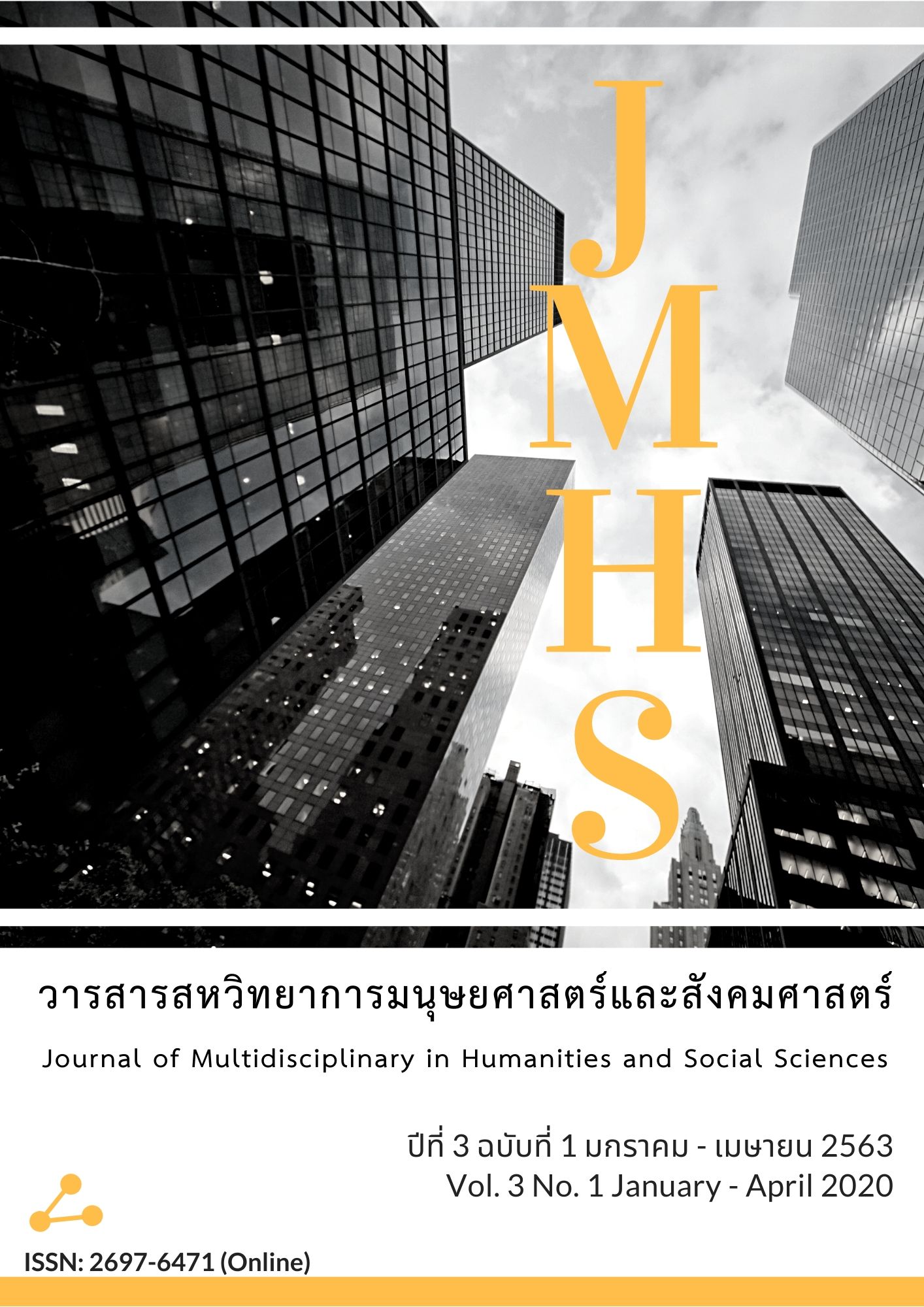Conscious Building the Good Citizenship in Community development and Urbanized Buddhist Community in Nakhon Pathom Province
Main Article Content
Abstract
This article is part of the research on “Network Conscious Building the Good Citizenship in Community development and Urbanized Buddhist Community in Nakhon Pathom Province. This research has the objective to study citizenship awareness in community development and urbanization of Nakhon Pathom province. Using the integrated research methodology, namely quantitative research The quantitative data were collected from 375 samples. The data were analyzed by using percentage, mean, standard deviation. And qualitative research 24 in-depth interviews with key informants/person and 12 specific group conversations/person, analyzing data in context and describing.
The research found that
- 1. Awareness of citizenship in community development and urbanization of communities in Nakhon Pathom Province From the study of the context of community development and urbanization of urban communities in the study area, it can be seen that the mechanism of urbanization is "Bowon" with "community funds" that are fundamental factors that drive communities to develop. Cooperation from civil society Having visionary leaders Sake for the common good that wants to see the development of areas in various fields. It can grow faith and common awareness of the people in the community. Having religious places as temples as a center Is both a place to sell educational opportunities Is a source of economic promotion Reliance between the temple and the community Causing consciousness to participate in community development activities into a city where all stakeholders can make decisions Join in the process, get the results and participate in the evaluation. And the people in the community who are affected by the development have the opportunity to suggest ideas together to find a joint solution to drive community development activities. Therefore is an expression of citizenship awareness as according to democracy.
Article Details
Views and opinions appearing in the Journal it is the responsibility of the author of the article, and does not constitute the view and responsibility of the editorial team.
References
ประเวศ วะสี และคณะ. (2542). ยุทธศาสตร์แก้วิกฤติชาติ. กรุงเทพฯ: สถาบันชุมชนท้องถิ่นพัฒนา.
ปาริชาติ วลัยเสถียร. (2541). ทฤษฎีและหลักการพัฒนาชุมชน. กรุงเทพฯ: มหาวิทยาลัยธรรมศาสตร์.
แผนแผนพัฒนาท้องถิ่นสี่ ปี (พ.ศ.2561-2564) เทศบาลตำบลบางกระทึก. (เอกสารอัดสำเนา)
แผนยุทธศาสตร์เทศบาลเมืองไร่ขิง พ.ศ.2559-2563. (เอกสารอัดสำเนา).
พระธรรมปิฎก (ป.อ.ปยุตฺโต). (2537). อุดมธรรมนำจิตสำนึกของสังคมไทย. (พิมพ์ครั้งที่ 4). กรุงเทพฯ: สหธรรมิก.
พระมหาประกาศิต ฐิติปสิทธิกร และ คณะ (2562). เครือข่ายทางสังคม : กลไกการเสริมสร้างหลักประกันคุณภาพชีวิตที่ยั่งยืนสำหรับนักเรียนระดับมัธยมศึกษาในจังหวัดนครปฐมโดยใช้หลักศีล 5. รายงานการวิจัย. สำนักงานกองทุนสนับสนุนการสร้างเสริมสุขภาพ (สสส.).
พระมหาประกาศิต ฐิติปสิทธิกร. (2561). ปราชญ์ป่า : กระบวนการสร้างจิตสำนึกร่วมในการจัดการป่าชุมชนต้นแบบเขตลุ่มแม่น้ำมูลตอนบน. วารสารสันติศึกษาปริทรรศน์ มจร, 6(ฉบับพิเศษ), 61-75.
ไพบูลย์ วัฒนศิริธรรม. (2543). สำนึกไทยที่พึงปรารถนา. กรุงเทพฯ: มูลนิธิบูรณะชนบทแห่งประเทศไทยในพระบรมราชูปถัมภ์.
รัฐพงศ์ บุญญานุวัตร. (2552). การมีส่วนร่วมในการพัฒนาชุมชนของประชาชน เขตดุสิต กรุงเทพมหานคร. รายงานการวิจัย. มหาวิทยาลัยราชภัฏสวนสุนันทา.
วิรัช วิรัชนิภาวรรณ. (2549). การพัฒนาเมืองและชนบทประยุกต์. กรุงเทพฯ: ฟอร์เพซ.
ศุภกิจ วงศ์วิวัฒนนุกิจ. (2555). พจนานุกรมศัพท์การวิจัยและสถิติ. กรุงเทพฯ: ด่านสุธาการพิมพ์.

